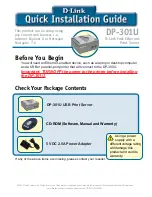
servers
or
power,
management,
I/O,
KVM,
LAN
or
blower
modules
in
hot-swap
bays
within
specified
time
limits
and
without
removing
power
from
the
BladeCenter
T
unit.
See
Chapter
3,
“Removing
and
installing
BladeCenter
T
modules
and
options,”
on
page
25
for
detailed
instructions.
Attention:
To
maintain
proper
system
cooling,
each
unoccupied
bay
must
contain
a
filler
blade
or
filler
module.
v
Redundancy
capabilities
The
following
redundant
components
in
the
BladeCenter
T
unit
enable
continued
operation
if
one
of
the
components
fails:
–
Power
modules:
In
normal
operation,
the
redundant
power
modules
provide
redundant
power
feeds
to
share
the
system
load.
If
one
of
the
power
modules
fails,
the
working
power
module
handles
the
entire
load.
You
can
then
replace
the
failed
power
module
without
shutting
down
the
BladeCenter
T
unit.
–
Blowers:
In
normal
operation,
the
redundant
blower
modules
share
the
system
load.
If
one
of
the
blowers
fails,
the
other
three
working
blowers
handle
the
entire
load.
You
can
then
replace
the
failed
blower
without
shutting
down
the
BladeCenter
T
unit.
–
Management
modules:
Only
one
management
module
is
active
at
a
time.
If
a
second
management
module
has
been
installed
and
the
active
management
module
fails,
the
secondary
(redundant)
management
module
becomes
the
active
management
module
containing
the
current
BladeCenter
T
configuration
and
status
information.
You
can
then
replace
the
failed
management
module
without
shutting
down
the
BladeCenter
T
unit.
–
BladeCenter
T
backplane
characteristics:
The
backplane
has
the
following
redundancy
characteristics:
-
Hot-pluggable
connectors
for
the
following
components:
v
Eight
blade
servers
v
Four
I/O
modules
v
Two
management
modules
v
Four
power
supplies
v
Four
blowers
-
Redundant
high-speed
SERDES
interconnects
between
blade
servers
and
switches
-
Support
for
redundant
management
modules
v
Redundant
I2C
communications
between
management
modules
and
all
modules
(except
the
blade
servers)
v
Redundant
RS-485
communications
between
management
modules
and
blade
servers
v
Redundant
analog
video
connections
from
blade
servers
to
management
modules
v
Redundant
USB
connections
between
blade
servers
and
management
modules
v
Redundant,
secure
Ethernet
management
port
between
switches
and
management
modules
v
Redundant
network
connection
capabilities
Configuring
a
pair
of
Ethernet
switch
modules
in
I/O-module
bays
1
and
2
provides
support
for
Ethernet
failover
configured
on
blade
servers.
See
“Configuring
an
I/O
module”
on
page
68
for
more
information.
If
the
I/O
expansion
options
in
your
blade
servers
can
be
configured
for
failover,
Chapter
1.
Introduction
9
Содержание BladeCenter T Type 8720
Страница 3: ...BladeCenter T Types 8720 and 8730 Installation and User s Guide ERserver...
Страница 8: ...vi BladeCenter T Types 8720 and 8730 Installation and User s Guide...
Страница 28: ...14 BladeCenter T Types 8720 and 8730 Installation and User s Guide...
Страница 64: ...50 BladeCenter T Types 8720 and 8730 Installation and User s Guide...
Страница 74: ...60 BladeCenter T Types 8720 and 8730 Installation and User s Guide...
Страница 88: ...74 BladeCenter T Types 8720 and 8730 Installation and User s Guide...
Страница 122: ...108 BladeCenter T Types 8720 and 8730 Installation and User s Guide...
Страница 127: ......
Страница 128: ...Part Number 88P9320 Printed in USA 1P P N 88P9320...
















































